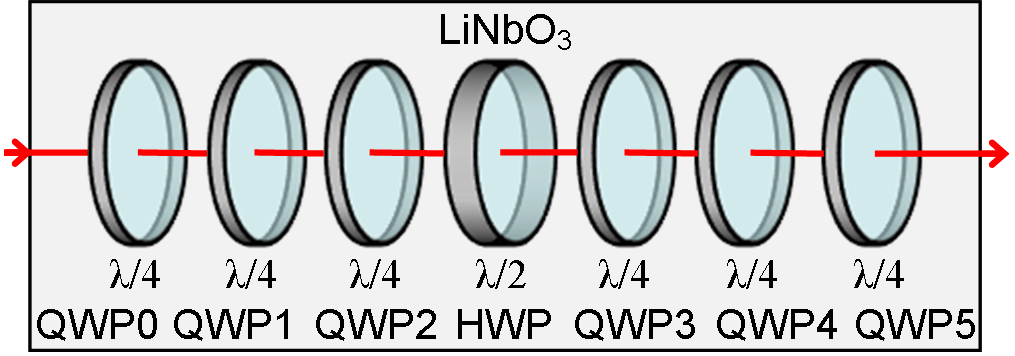Technology at work
The technology of Novoptel's polarization controllers is also applied in polarization scramblers.
Lightning protection demonstrated through usage of EPS1000 polarization scrambler
The EPS1000 has been used to demonstrate lightning protection https://www.infinera.com/ice5-innovation/ of coherent optical data transmission at the OFC2018 exhibition.
Schematic of EPS1000 polarization scrambler
Two or three electrooptic rotating quarterwave plates (QWP0, QWP1, QWP2), one halfwave plate (HWP) and two or three more quarterwave plates (QWP3, QWP4, QWP5) are traversed by the light. This way arbitrary input polarizations are scrambled. In all Poincaré sphere representations here below the HWP rotates fast compared to QWP1 to QWP4, while QWP0 and QWP5 are not implemented.
Function of waveplates in EPS1000 polarization scrambler
A polarization transformer made from LiNbO3 is configured such that it contains cascaded electrooptic waveplates. Each electrical period of waveplate voltages corresponds to half a mechanical turn of a waveplate. As the scrambling speed we define that speed on the Poincaré sphere which occurs if a waveplate generates rotating linear polarization.
QWP0 to QWP2 scramble the unknown input polarization.
Dependent on this, the fast HWP generates circles in parallel planes of the Poincaré sphere with radii between 0 and 1, having an arithmetic mean of π/4. In each period of the HWP voltages such circle is traversed twice. At radius 1, corresponding to rotating linear polarization on the Poincaré sphere equator, a trajectory of length 4π is thus generated in each electrical period. The polarization change speed of the HWP, adjustable from -10,000 to
QWP3 to QWP5 subsequently scramble the orientations of the circles and thereby distribute the polarization changes and their directions equally over the Poincaré sphere. A QWP can likewise generate rotating linear polarization, from circular input polarization. In doing so the Poincaré sphere equator is traversed once in each electric period of the QWP voltages, corresponding to a trajectory of length 2π. The polarization change speed of the QWPs, individually adjustable from -1,000,000 to
Poincaré sphere representations, recorded behind EPS1000 polarization scrambler
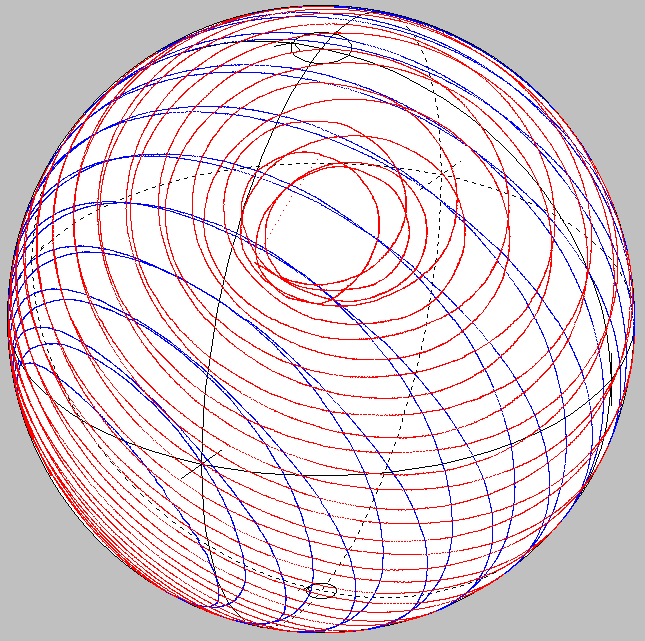 |
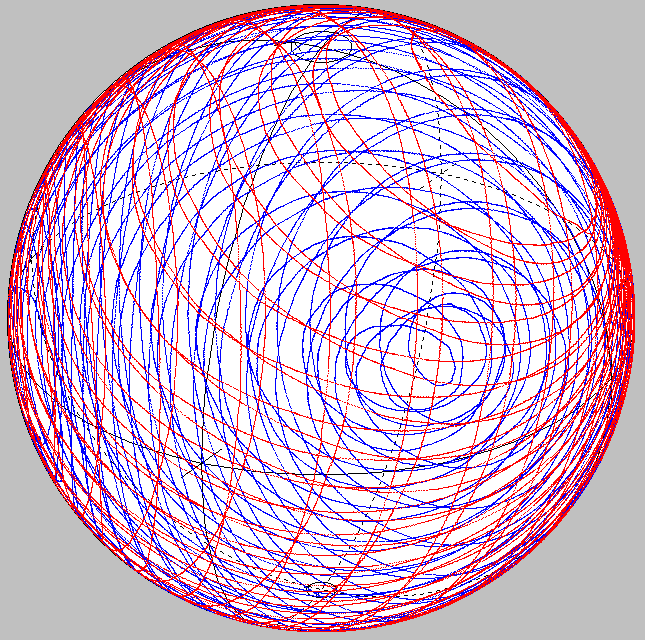 |
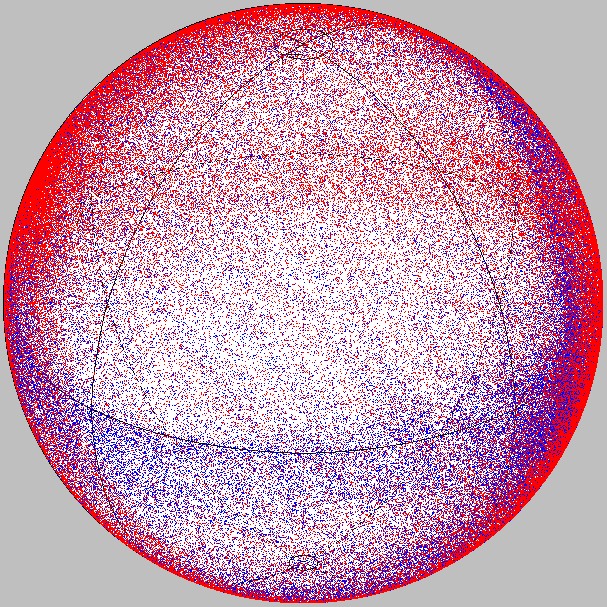 |
All waveplates are running: QWP1, QWP2, HWP, QWP3, QWP4. Rightmost: HWP rotates fast. Everywhere else, also below: HWP rotates slowly. QWP0 and QWP5 are not implemented here. | |
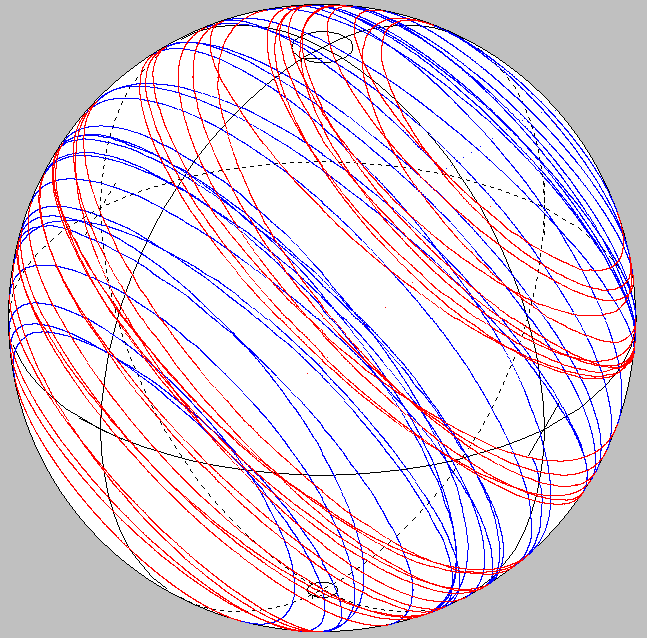 |
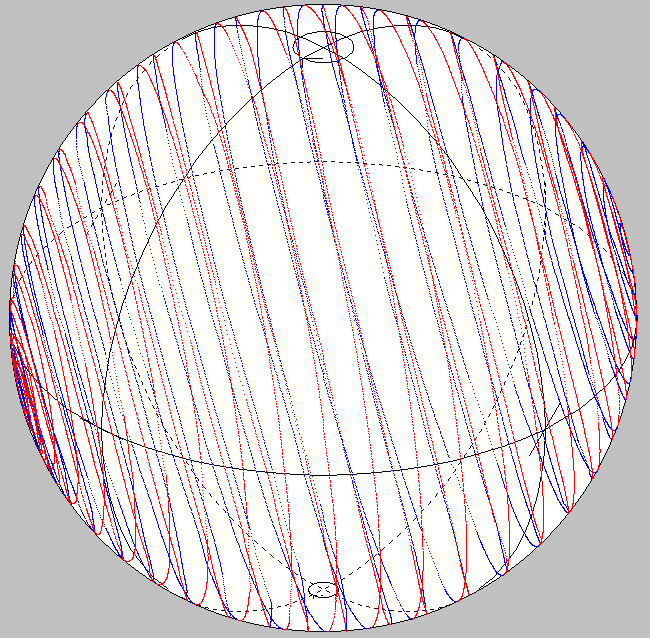 |
QWP1, QWP2 at the front transform the input polarization of the HWP which therefore generates circles of varying sizes in parallel planes. QWP3, QWP4 at the rear are switched off. | |
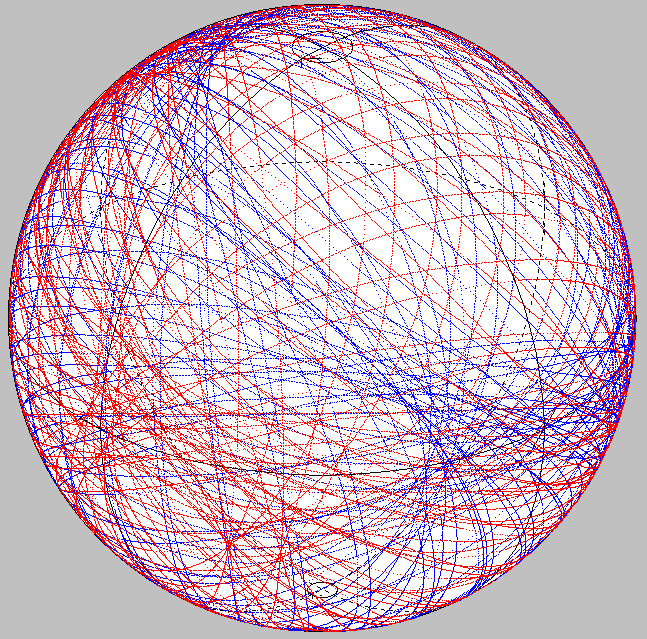 |
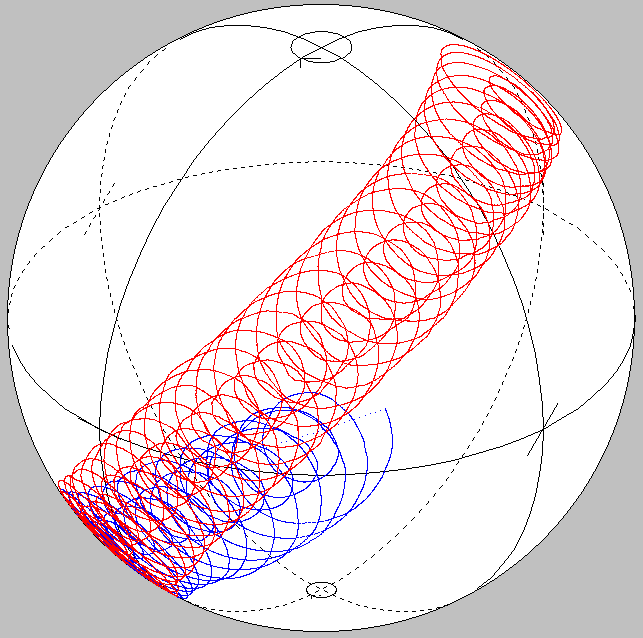 |
QWP1, QWP2 at the front are switched off. The HWP generates large (left) or small (right) circles. These are transformed by QWP3, QWP4 at the rear into varying orientations. |
Electrical scrambling spectra obtained from EPS1000 + polarizer + photodiode
EPS1000 polarization scrambler with standard 40-ns clock cycles.Recorded with electrical spectrum analyzer. Horizontal axis: Hz; vertical axis: 10 dB/div.
All QWPs are running at slow incommensurate speeds while the HWP is running fast at various speeds:
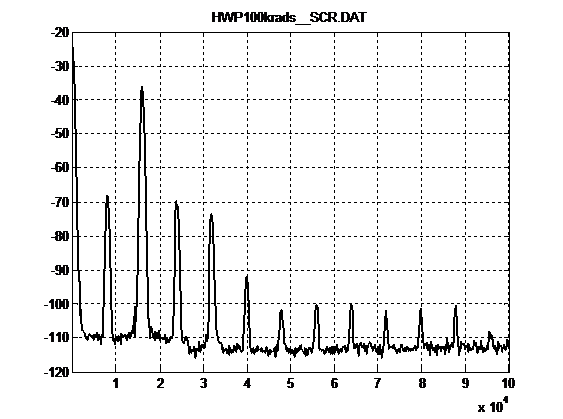 |
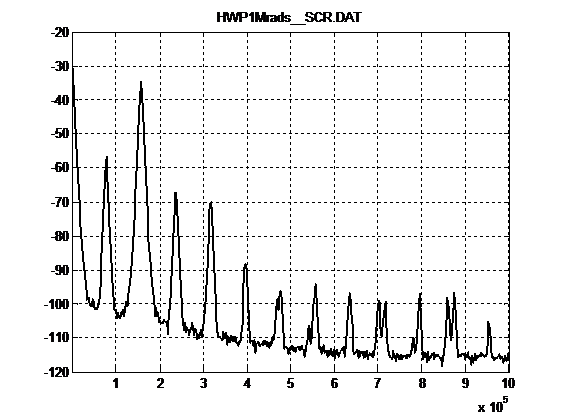 |
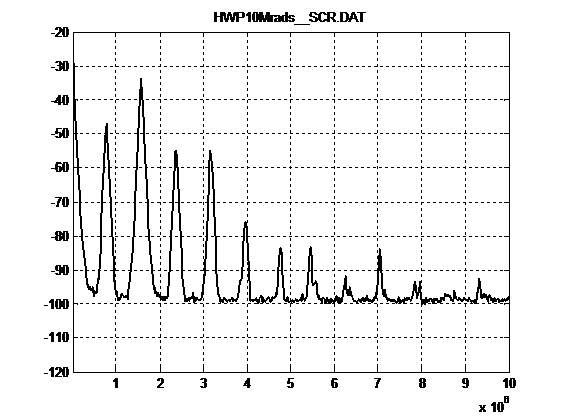 |
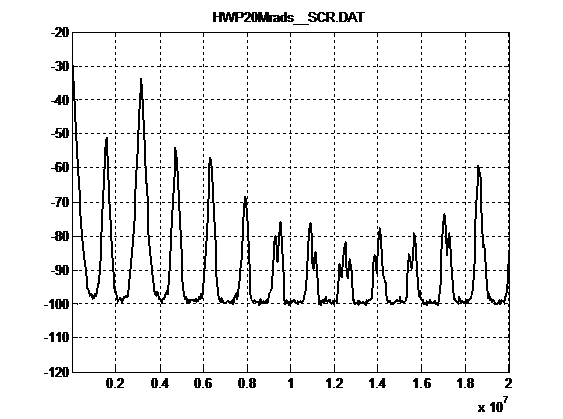 |
| 100 krad/s | 1 Mrad/s | 10 Mrad/s | 20 Mrad/s |
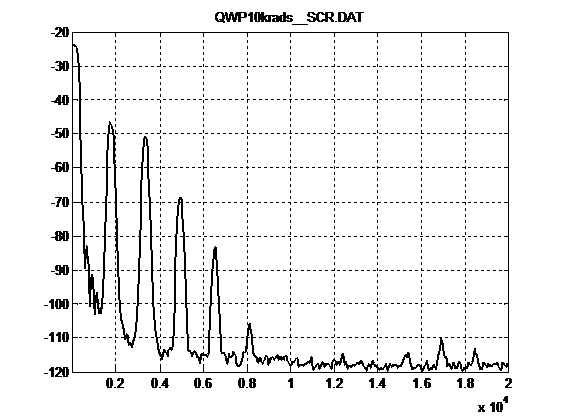 |
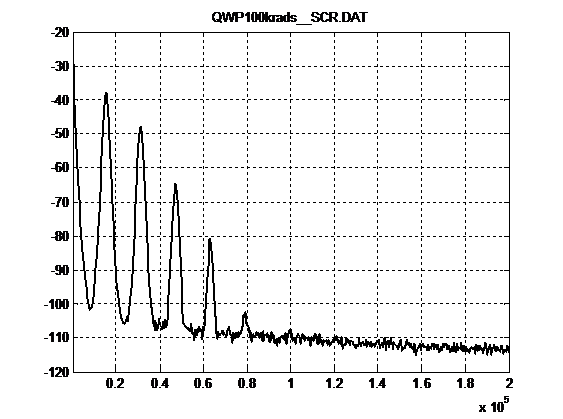 |
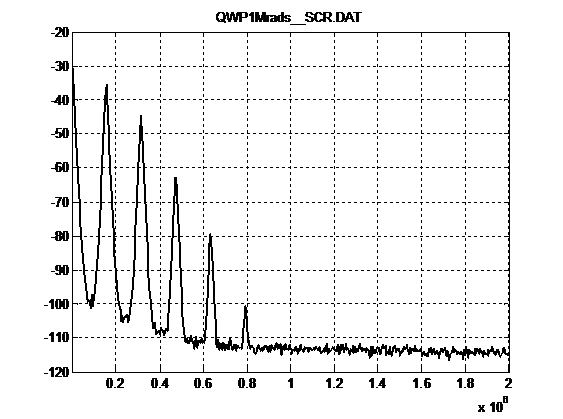 |
|
| 10 krad/s | 100 krad/s | 1 Mrad/s |
EPS1000 polarization scrambler with 20-ns clock cycles. Only HWP rotates. Recorded with PM1000 polarimeter:
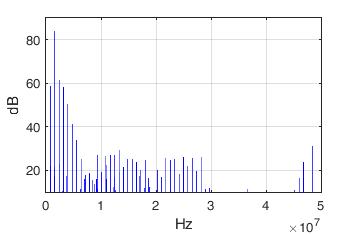 |
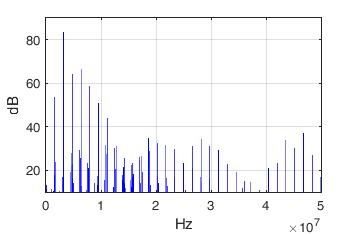 |
| 10 Mrad/s | 20 Mrad/s |
Time-domain response of EPS1000 polarization scrambler
Oscillogram of the output voltage of an electrical driver amplifier when producing a 60-V step at the HWP. Total settling time is 50 ns, step response time is 34 ns. By default, the EPS1000 is optimized with respect to large-signal response. Small-signal response time is <20 ns. Horizontal axis: 20 ns/div; vertical axis: not to scale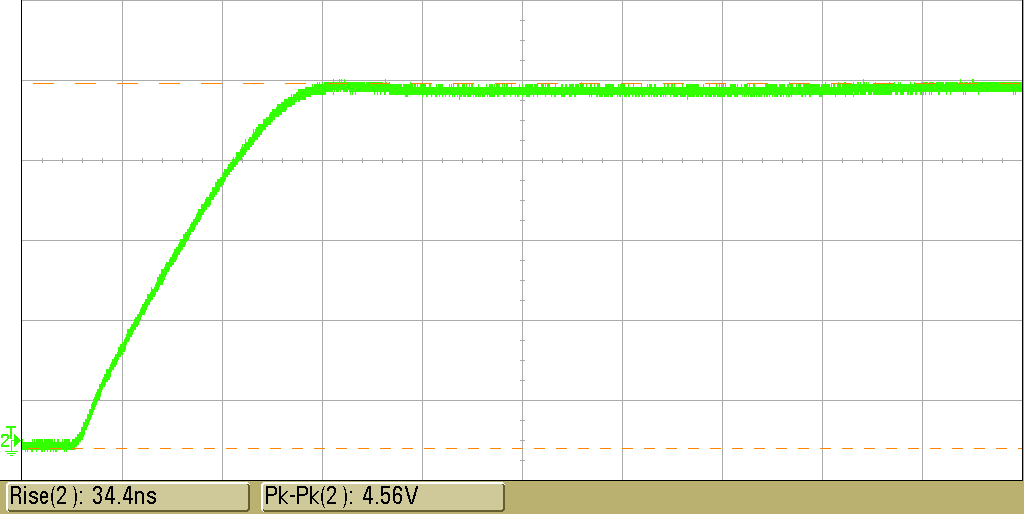
Polarization-dependent loss (PDL) measurement
For details see Section IV. here. PDL measurement requires an EPS1000 equipped with 1 or 2 optical power detectors. For various generated polaization states the optical power behind the device under test (DUT) is measured. The averaging interval is selectable (80 ns, 160 ns, 320 ns, ... 2.68 s). With default settings, one set of measurements plus data transfer takes about 30 s. Reference measurements allow the losses of the LiNbO3 polarization transformer inside the EPS1000 to be mathematically eliminated. Minimum, mean and maximum attenuation and PDL of the DUT are thus determined. Typical results follow.
| PDL reproducibility A fiber is used as the reference and as the DUT. |
< 0.003 dB |
| PDL values and error ranges 6 DUTs, which are 1 patchcord, 4 PDL components and 1 polarizer, are measured against a reference. This is repeated at least 10 times with different input polarizations of the EPS1000 and different polarization transformations before and behind the DUT. PDL value with error range is given for each DUT. The maximum perceived patchcord PDL (0.0276 dB) is a measure of the total error window of small PDL. |
0.0186±0.009 dB 0.0799±0.018 dB 0.433±0.041 dB 1.59±0.087 dB 7.33±0.051 dB 50.4±1.5 dB |
 Deutsch
Deutsch